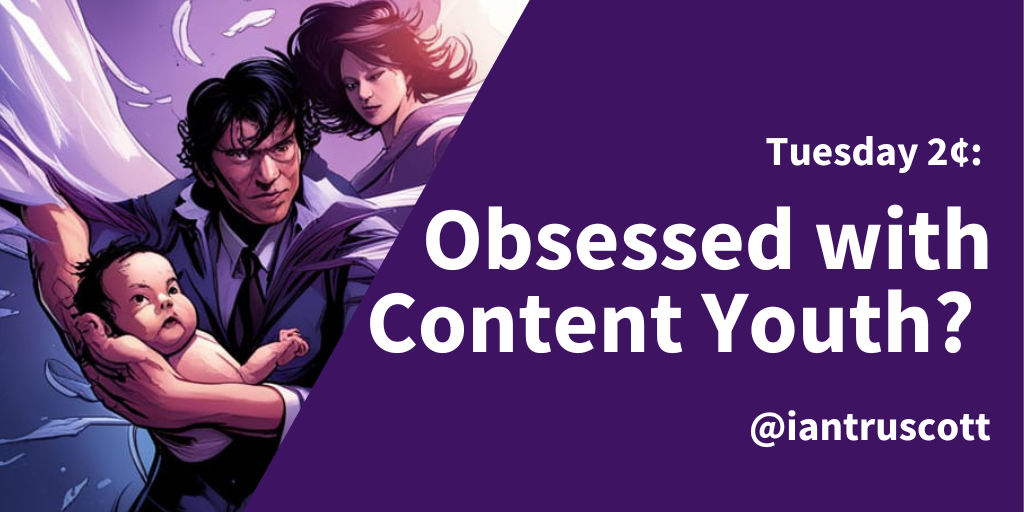In this weekly ponder; what’s old and dull to you might be new to someone else, so give that old content a polish and get over our obsession with content youth.
I am working on our content strategy with a workshop with the team today, and as we discussed the content we already have, I went into my little rant about marketing obsession with content youth. As marketers, we tend to ignore what we’ve created before and create something new.
I’ve mentioned before that I like to create personas around audience needs and then build a content strategy built on these needs. And as we explore those, it’s clear that our audience may not need us to create brand-new content to help them with these needs.
Let’s say you are serving an audience that is starting a new role and starting with email marketing. They are treading a well-worn path, working in a well-established marketing discipline, supported by a mature category of tools, best practices and all of that.
But, as they start, they are figuring all of that out, so what’s new and useful to them, that will help them with their needs will be old to someone else. To get help on that journey, they don’t need content created today.
Of course, if we are serving this audience, the exact same content we used before won’t do, while the basic principles will be the same there will be changes to the context. But there is no shame in repeating our content with a little remix of the new.
Yet, we don’t do that, maybe we get bored with our own content and we feel the need to create new. But, the audience is not bored with it; the basics are what they need.
I’ve seen lots of examples of this, businesses with multiple articles on the same topic, not only harming their own SEO, but imagine the accrued cost of reproducing all these assets from scratch.
And, oddly enough ten years ago, I wrote about this topic here, which is mostly about whether to add a date to content or not. As, it seems content with a date can be perceived as less credible because we are so obsessed with content youth.
And what better way to give it a fresh spin than asking ChatGPT for the top 5 points I made in that post.
- The article discusses society’s obsession with the age of online content, especially on social media platforms.
- The author discovered the hashtag #oldiebutgoodie on Twitter, where content considered “old” could be just a few months old.
- Despite the age of some content, it can still contain valuable and relevant ideas, particularly in fields like Content Marketing.
- Sharing older content that has a date can lead to concerns about credibility and engagement, as people may hesitate to click on old links.
- The article highlights the importance of content freshness for search engines and suggests that the publication date of online content can be as crucial as its title and subject in influencing sharing. The author also mentions how ideas in books tend to live longer than online content and questions the value of our obsession with constantly producing new content.
Yeah, that – same is true today, if you have a few minutes, take a look at that original article: Do we need to question our obsession with content youth?
And maybe agree, we don’t need to be obsessed with content youth.
As indicated some of this article was written with ChatGPT and the image was created using A.I. through NightCafe Creator
Fancy more of this?
Subscribe to my Rockstar CMO Newsletter

I’m a 3xCMO, now a marketing strategy advisor and podcast host at Rockstar CMO. Although, I’m not a rock star, but a marketing leader, strategist, content marketer, columnist, speaker, industry watcher, and creator of ART (Awareness, Revenue, and Trust) for the companies I work with. But most of all, I am an enthusiastic tea drinker.
You can find me on LinkedIn, Twitter, or now Threads! – or listen to my weekly podcast at Rockstarcmo.com
The half-baked thoughts shared on this blog may not reflect those of my employer or clients, and if the topic of this article is interesting or you just want to say hello please get in touch.
